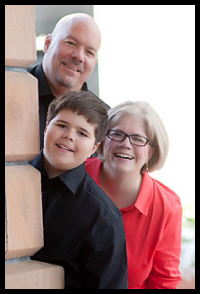
We know that after Jesus ascended to Heaven, the Christians continued to meet in Solomon’s Colonnade. Acts 5:12.
My intent with this post is to write a short and useful generalization of how I see Christianity today as a largely-compromised version of the original religion, as taught and demonstrated by Jesus and his apostles in the First Century. To be useful as I envision, it needs to stay short–yet if it stays short, it must make use of generalizations that aren’t true of every single believer. I hope that you can forgive this as you read, realizing that you or someone you know may well be an exception to the general observations here. Indeed, I hope you are!
Perhaps it will be helpful to think of this post as food for thought—or even as a conversation starter.
Then vs. Now
In the First Century, Christianity was about…
- …loving God with all of your heart and all of your mind and all of your soul and all of your strength. For many today, it’s more about being OK, even if you’re making less effort than this.
- …loving your neighbor as yourself. For many today, it’s more about loving your neighbors only as much as you find convenient.
- …being transformed by the renewing of your mind. For many today, it’s more about being accepted as you are, and not really needing to be transformed or renewed.
- …discovering and learning about God. For many today, it’s more about discovering and learning themselves.
- …subjecting your own will in order to please God. For many today, it’s more about pleasing themselves.
- …bringing the Old Testament religion to its intended fulfillment. For many today, it’s more about shunning the Old Testament religion altogether, and setting aside most of those precepts.
- …getting to know all about God and the history of the interactions between God, humans, and angels. For many today, it’s more about just getting the key ideas (“core doctrine”) and “getting saved”.
- …personal maturation in righteousness. For many today, it’s more about being OK even if you don’t mature.
- …preparing oneself for eternity with God. For many today, it’s more about getting to be with God forever without having to prepare much at all.
- …fulfilling the requirements of God, whatever they might be. For many today, it’s more about whittling down those requirements to fairly scant versions of “faith”.
- …living out a faith that was founded on what God actually promised. For many today, it’s about believing deeply in their own wishes, even if God made no such promise.
- …Jesus being one’s actual spiritual master. For many today, it’s more about Jesus being their friend.
- ...deferring in their choices to God’s wishes. For many today, it’s about a God who defers to the wishes of the individual, finding a way to be pleased with them even when they habitually go against his wishes.
- …a grace that “teaches us to say no to ungodly desires”. For many today, it’s about a “grace” that means you don’t really have to say no to ungodly desires.
- …a grace that prompted Paul to “work harder than them all”. For many today, it’s about a grace that means you don’t have to work at all.
- …a single and unified body of believers, deferring to Jesus’ authority. For many today, it’s about a deeply fractured and diverse group of church organizations—each one deferring to its own authority to decide what to do.
- …learning to live well in a fellowship of diverse people, young and old. For many today, it’s about splitting the fellowship up into various age groups, who keep largely to themselves.
- …a God who is both kind and stern. For many today, it is about a God who is either one or the other, and not both.
- …becoming like Jesus in one’s character. For many today, it is about not having to become like Jesus.
- …learning and understanding the scriptures. For many today, it’s about not having to learn or understand the scriptures.
- …doing good works that please God. For many today, it’s about not having to do good works.
- …taking off the old man and putting on the new man. For many today, it’s about being completely accepted by God while still being that old man.
- …being right with God. For many today, it’s about being right with church, or with self.
- …getting ready to go to Heaven. For many today, it’s more about making the best life they can on the Earth.
- …walking in the “way” of God. For many today, it’s more about trying to find their own way.
- …living in the “image” of God. For many today, it’s more about remaking a “God” in their own image.
These are some of the issues that I seem to notice most often. I may add more as I think of them. (I published this list with 25 items on 18 May 2023.) I should also write some short posts explaining each item on this list. As I get that done over time, I’ll come back and link each item here to the corresponding post.
Conclusion
I think that for the most part, the churches today look like what you’d expect when the worldly world gets hold of an idea and runs with it. I think it’s analogous to what happened to the quality of food once the marketers got hold of producing it. Churches abound today, yet maturely-righteous people seem to be rare. (And for the record, while Jesus had a wide gate for the unrighteous, the righteous would be few enough as to require only a narrow gate to get through.)
And I have recently realized that the maturely-righteous people I know are not that way because of the churches they go to, but in spite of them! They realize there’s a lot of compromise at church, and they might not know what to do about it. And it raises lots of questions, but naturally, they can’t very well turn to the compromised institutions for (good) answers. No, the churches, most of whom don’t intend to change at all, are likely to tell them “stay and help fight for change!”. And if they do stay, it’s very rare that such change will ever come in any substantial way.
Many, I suppose, will never figure out how worldly their churches are—and how much they differ from the First-Century ekklesia of Jesus. There’s a great deal to be said about this, but the point of this particular post is simply to put together a bit of a brief “profile” on the differences I see between then and now. Feel free to wrestle with me over these things; I’ll be happy to explain myself.



